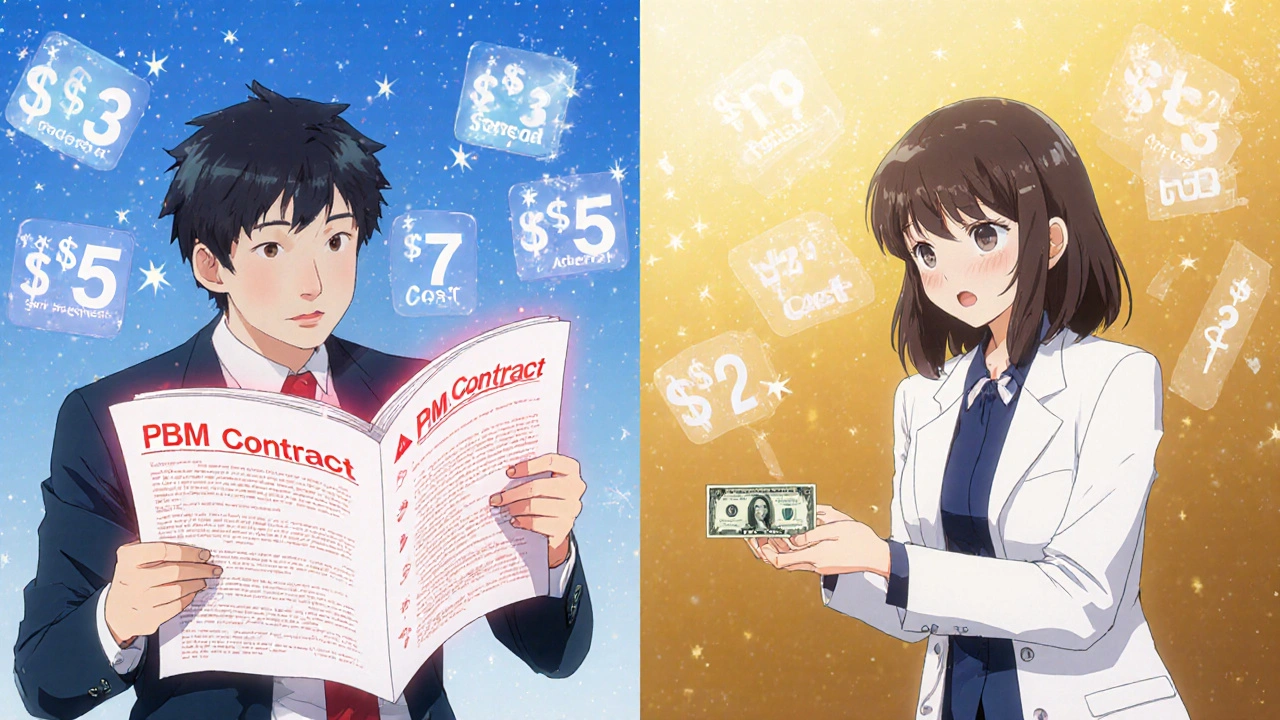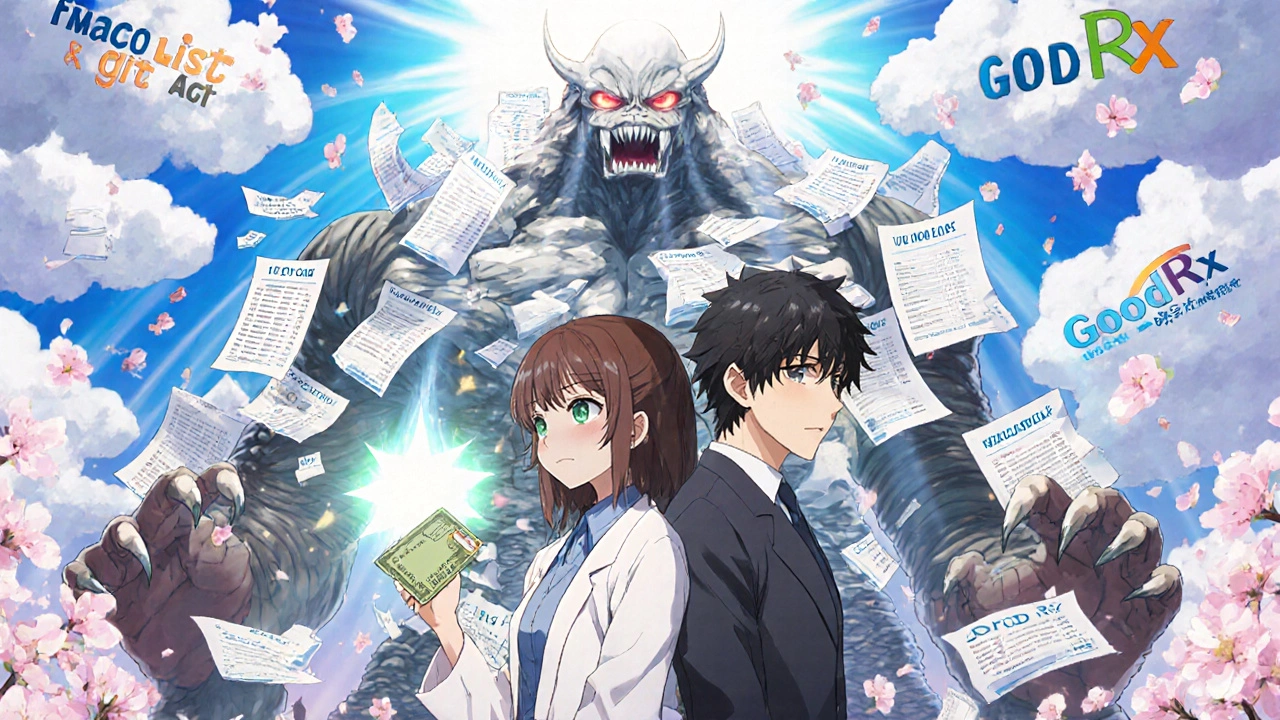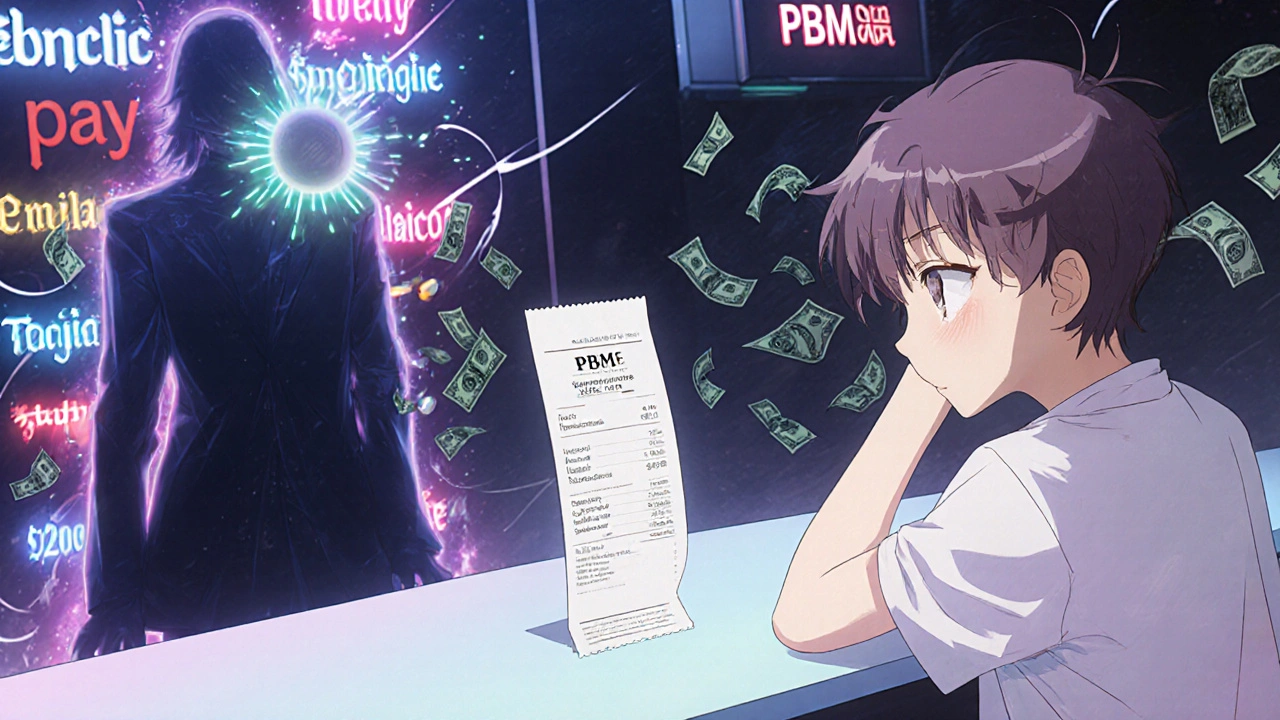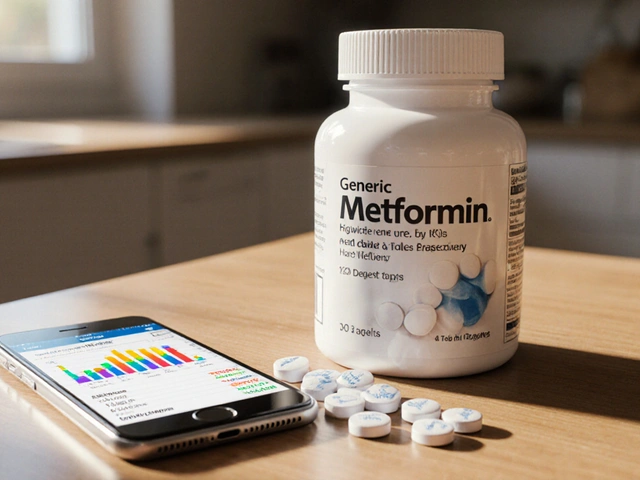Ever filled a prescription for a generic drug and been shocked by the price-even with insurance? You’re not alone. In 2024, nearly half of insured Americans paid more out-of-pocket for a generic medication than they would have if they’d paid cash at the pharmacy. This isn’t a mistake. It’s how the system was designed.
Who Really Sets the Price of Generic Drugs?
The price you see at the pharmacy counter isn’t set by the drugmaker, the pharmacist, or even your insurance company directly. It’s decided behind closed doors by Pharmacy Benefit Managers (PBMs)-third-party companies that act as middlemen between insurers, pharmacies, and drug manufacturers. Three PBMs-OptumRx, CVS Caremark, and Express Scripts-control about 80% of the market. They negotiate what generics are covered, how much pharmacies get paid to dispense them, and how much you pay at the register.
Here’s the catch: the price you pay isn’t the same as what the pharmacy gets paid. PBMs use something called spread pricing. They tell your insurer the drug costs $45. They tell the pharmacy they’ll pay $12. The $33 difference? That’s profit for the PBM-and it’s hidden from you. In 2024, this practice generated $15.2 billion in undisclosed revenue, mostly from generic drugs.
How the Pricing Formula Actually Works
PBMs don’t just make up numbers. They use complex formulas based on outdated benchmarks like the Average Wholesale Price (AWP) or the National Average Drug Acquisition Cost (NADAC). These numbers are supposed to reflect what pharmacies actually pay for drugs. But they’re often inflated or outdated.
For example, a generic blood pressure pill might have a NADAC of $4.50. The PBM might reimburse the pharmacy $7.50 and charge your insurer $35. Your copay? $15. You’re paying more than the pharmacy’s actual cost-and more than what someone paying cash would pay.
And it gets worse. PBMs create Maximum Allowable Cost (MAC) lists that cap how much they’ll pay for a generic drug. These lists change without notice. One day, your $5 generic is covered. The next, it’s $12. Pharmacists often don’t know why-until a patient shows up angry because their copay jumped overnight.
Why Your Insurance Doesn’t Save You Money
Insurance was supposed to make drugs cheaper. But for generics, it often does the opposite. A 2024 Consumer Reports survey found that 42% of insured adults had paid more for a generic drug through their insurance than they would have paid cash. In some cases, the cash price was under $5. The insurance copay? $45.
This happens because PBMs structure copays as fixed amounts-$5, $10, $20-regardless of the actual drug cost. If the PBM sets the reimbursement rate low, the pharmacy can’t absorb the loss. So they pass the cost to you. Meanwhile, the PBM pockets the spread. The system rewards higher list prices, not lower ones.
Dr. Joseph Dieleman of the Institute for Health Metrics and Evaluation put it bluntly: “Higher list prices mean bigger rebates for PBMs-and higher out-of-pocket costs for patients.” That’s why a drug with a $100 list price might end up costing you more than one with a $50 list price, even if both are generics.

The Hidden Costs for Pharmacies
Independent pharmacies are caught in the middle. They’re forced to accept PBM contracts just to stay in business, even when the terms are unfair. Many pharmacies now run two pricing systems: one for insurance and one for cash. That means double the paperwork, double the confusion, and double the risk of mistakes.
And then there are clawbacks. A PBM pays a pharmacy $7 for a prescription. Later, they discover the actual cost was $5. So they take back $2-after the patient has already left the pharmacy. Sixty-three percent of independent pharmacies report being clawed back at least once a month. Some lose thousands a year.
Pharmacists spend 200-300 hours a year just trying to understand PBM contracts. Small shops hire PBM specialists for $100,000 a year just to decode the fine print. Meanwhile, PBM documentation is rated “poor” by 76% of pharmacists. Changes happen without notice. One pharmacy in Ohio closed in 2023 after a PBM dropped their reimbursement rate for a common generic from $10 to $2 overnight.
What’s Being Done to Fix It?
Pressure is building. In 2024, 42 states passed or considered laws requiring PBMs to disclose spread pricing and MAC lists. The federal government isn’t far behind. In September 2024, President Biden signed an executive order banning spread pricing in all federal health programs-starting January 2026.
The Inflation Reduction Act’s Medicare drug price negotiation program is also starting to shift the market. While it only applies to 20 drugs in 2025, its ripple effects are already being felt. Drugmakers are now negotiating lower list prices to avoid being targeted. PBMs are starting to adjust their reimbursement models.
Legislation like the Pharmacy Benefit Manager Transparency Act of 2025 would force PBMs to pass 100% of rebates to insurers-cutting out the hidden profits. If passed, it could save consumers billions.

What You Can Do Right Now
You don’t have to wait for policy changes to save money. Here’s what works:
- Always ask the pharmacist: “What’s the cash price?” Many generics cost less than $5 without insurance.
- Use discount apps like GoodRx or SingleCare. They often show prices lower than your insurance copay.
- Ask if your pharmacy offers a membership program. Some independent pharmacies sell common generics for $4-$10 without insurance.
- If your copay is higher than the cash price, file a complaint with your insurer. It’s not normal. It’s not legal in some states.
- Switch to a plan with transparent pricing. Only 12% of employer plans currently offer this-but they exist.
The system isn’t broken by accident. It was built this way to maximize profits for middlemen. But it doesn’t have to stay that way. Patients are starting to push back. Pharmacies are organizing. States are acting. And the money trail? It’s finally getting brighter.
Why This Matters Beyond Your Prescription
This isn’t just about a $40 pill. It’s about trust. When you pay for insurance expecting savings, but get hit with surprise bills, you lose faith in the whole system. That’s why 78% of complaints to the CMS Ombudsman in 2023 were about generic drug pricing surprises.
And it’s not just patients. Pharmacists are leaving the profession. Between 2018 and 2023, over 11,300 independent pharmacies shut down-mostly because PBM reimbursements didn’t cover costs. Rural towns are losing their only pharmacy. That’s not just economics. It’s public health.
The real cost of this system isn’t in the numbers. It’s in the people who skip doses because they can’t afford the copay. The ones who wait until they’re sick enough to go to the ER. The ones who stop trusting their doctors because the system feels rigged.
Change is coming. But you don’t have to wait for it. Know your rights. Ask the right questions. Pay cash when it’s cheaper. Your health-and your wallet-will thank you.






Andrea Johnston
November 18, 2025 at 11:03
This is why I stopped trusting my insurance years ago. I pay $50 a month for a plan that makes me pay $35 for a $4 pill. I don't get why people still think insurance is saving them. It's a shell game with your health as the prize.
My pharmacist told me to always ask for the cash price. I do now. I saved $120 last month just by refusing to use my insurance for generics. No one told me this. It's like they want you to stay blind.